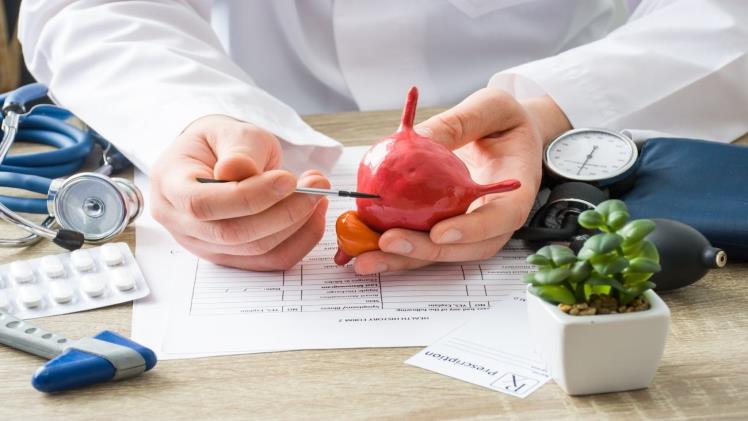Urinary incontinence is a common yet often under-discussed condition in Singapore that can significantly affect daily life and confidence. It refers to the involuntary leakage of urine, which may occur during coughing, laughing, or even at rest. While many people assume it is simply part of ageing, effective urinary incontinence treatment options are available to help restore control and quality of life.
From lifestyle adjustments to advanced medical therapies, modern urology offers comprehensive solutions tailored to each individual. In this article, we’ll explore how doctors diagnose the condition and manage it through evidence-based urinary incontinence treatment approaches.
Contents
Types of Urinary Incontinence
Before starting any urinary incontinence treatment, it’s important to understand the different types of incontinence. Each has distinct causes and requires a tailored management plan:
- Stress incontinence – Leakage of urine during physical exertion such as coughing, sneezing, laughing, or exercising.
- Urge incontinence – A sudden, intense urge to urinate followed by involuntary leakage; often linked to overactive bladder.
- Overflow incontinence – Continuous dribbling of urine caused by incomplete bladder emptying.
- Functional incontinence – Difficulty reaching the toilet in time due to mobility, neurological, or cognitive issues.
- Mixed incontinence – A combination of stress and urge symptoms, common in both men and women.
Identifying the correct type is the first step toward effective urinary incontinence treatment, ensuring that therapy is customised to your specific condition.
Diagnosing Urinary Tract Infection (UTI)
When a UTI is suspected, your doctor will begin by discussing your symptoms, such as pain during urination, increased frequency, or cloudy urine. The main test used is a urinalysis, which checks for bacteria, white blood cells, and other signs of infection.
If the infection keeps coming back, a urine culture helps identify the exact bacteria responsible. In some cases, imaging tests like an ultrasound or CT scan may be recommended to rule out structural issues in the urinary tract.
Recurrent UTIs can sometimes worsen bladder control and mimic incontinence symptoms. Proper diagnosis and management are therefore essential before starting any urinary incontinence treatment plan.
First-Line Urinary Incontinence Treatments
For many patients, the first step in urinary incontinence treatment involves simple lifestyle and behavioural changes. These non-invasive measures can make a significant difference. Your doctor may recommend bladder training to gradually increase the time between bathroom visits, improving bladder control. Pelvic floor muscle exercises (Kegels) are another cornerstone therapy, strengthening the muscles that support bladder function.
Maintaining a healthy weight, limiting caffeine and alcohol, and managing fluid intake can also reduce symptoms. In women, targeted physiotherapy may further enhance results. By addressing daily habits and strengthening key muscles, these approaches often improve bladder control without the need for medication or surgery, forming the foundation of effective urinary incontinence treatment.
Minimally Invasive Treatments
When lifestyle measures are not enough, doctors may recommend additional urinary incontinence treatment options to improve bladder control. These can include:
- Medications – Drugs, such as anticholinergics and beta-3 agonists, can calm an overactive bladder, reducing urgency and frequency.
- Topical oestrogen (for women) – Low-dose oestrogen creams or rings may strengthen the urethral tissues and improve control, especially after menopause.
- Bladder Botox injections – Help relax the bladder muscle, increasing storage capacity and reducing involuntary contractions.
- Pessary devices – Silicone supports inserted into the vagina to reduce leakage caused by pelvic floor weakness.
- Nerve stimulation (neuromodulation) – Mild electrical impulses target bladder nerves to restore normal signalling and improve function.
These options are typically quick, outpatient-based procedures with minimal downtime. Selecting the right urinary incontinence treatment depends on your specific symptoms, medical history, and treatment goals.
Surgical Options
When conservative measures and minimally invasive options are not sufficient, surgery may provide long-term relief. Modern urinary incontinence treatment techniques are safe, effective, and tailored to individual needs. Common surgical options include:
- Mid-urethral sling procedure – A small mesh or strip of tissue is placed under the urethra to provide support and prevent leakage during physical activity.
- Bulking agent injections – Gel-like materials are injected around the urethra to help it close more tightly, reducing leakage.
- Artificial urinary sphincter – A mechanical device implanted to control urine flow, often used for men after prostate surgery.
- Bladder neck suspension – Lifts and secures the bladder neck to improve urethral support, particularly in women.
These procedures are typically performed under anaesthesia with minimal downtime. Surgical urinary incontinence treatment is considered when other approaches have not achieved satisfactory results.
Post-Treatment Care
After completing urinary incontinence treatment, ongoing care is vital to maintain results. Patients are encouraged to continue pelvic floor exercises, maintain a healthy weight, and follow up regularly with their urologist. Monitoring fluid intake and managing bladder habits help prevent recurrence and ensure lasting control and confidence.
Summary
Urinary incontinence can be distressing, but with the right care and professional guidance, it is highly treatable. From accurate diagnosis to tailored therapy, modern urinary incontinence treatment options help patients regain confidence and improve quality of life.
Don’t let bladder issues hold you back, take the first step toward better control today. Consult to our urologist at:
Asia Arthritis & Rheumatology Centre – Dr Annie Law | Senior Rheumatologist | Lupus Treatment Singapore
3 Mount Elizabeth, #05-03 Medical Centre, Singapore 228510
Phone: (65) 6235 3909
WhatsApp: (65) 8030 7862

